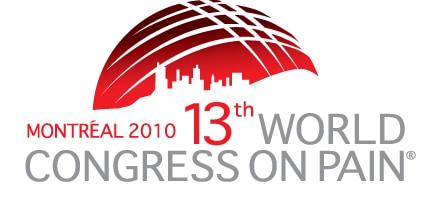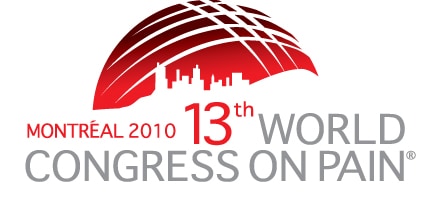
I have just been in Montreal for the World Congress on Pain – numerous presentations and about 1600 posters. It is the posters I really like – can be intimidating but there are always a few gems. Here is some preliminary work that I thought was interesting and which is relevant to work that our group is aiming to do with Mike Farrel and Kim Bennel from Melbourne Uni and Frank Keefe (who would be SIR Frank Keefe if he was on the other side of the pond) from Duke in the USA: “Imaging response to CBT in individuals with chronic pain” by Magdalena Naylor and her mates from the University of Vermont. They showed patients, and healthy controls, photos of negative, positive or neutral events and related brain activation to pain, coping and depression scores. The photos have been used to bits – they are called the IAPS photo set.
It is an interesting design because it is not investigating noxious stimuli, but generally aversive stimuli. In short, they found that after an 11 weeks coping skills training programme, patients with chronic pain showed less activation of the amygdala and increased activation of the insula, when viewing negative pictures and interpreted this as evidence that the coping skills programme resulted in greater inhibition of the amygdala by the insula. This strikes me as intuitively attractive, although the design clearly does not control for anything – I am sure the authors would agree. So, we cannot really conclude that the training programme did this, but we can use this information as justification for getting some money to find out.
One issue to consider on this front is the possible differences for people with chronic pain between body-part specific threatening stimuli, like photographs of a knife going into the hand, or the hand getting mashed in a meat slicer (both of these photos are in the IAPS set), and generally threatening stimuli, like photographs of a bus exploding or a scarey-looking man (also in the set). We had a visit from Stefaan Van Damme (who I saw last week and it is possible that he and Geert Crombez actually look younger every time I see them – something fishy going on there in Belgium) when I was in Oxford and we showed different effects of specific and general threat on prioritisation of tactile and auditory input – go here.
Regardless, it is great to see researchers across the globe starting to take on the challenge of investigating the mechanisms involved when these cognitive strategies modulate pain.

Van Damme S, Gallace A, Spence C, Crombez G, & Moseley GL (2009). Does the sight of physical threat induce a tactile processing bias? Modality-specific attentional facilitation induced by viewing threatening pictures. Brain research, 1253, 100-6 PMID: 19094970




